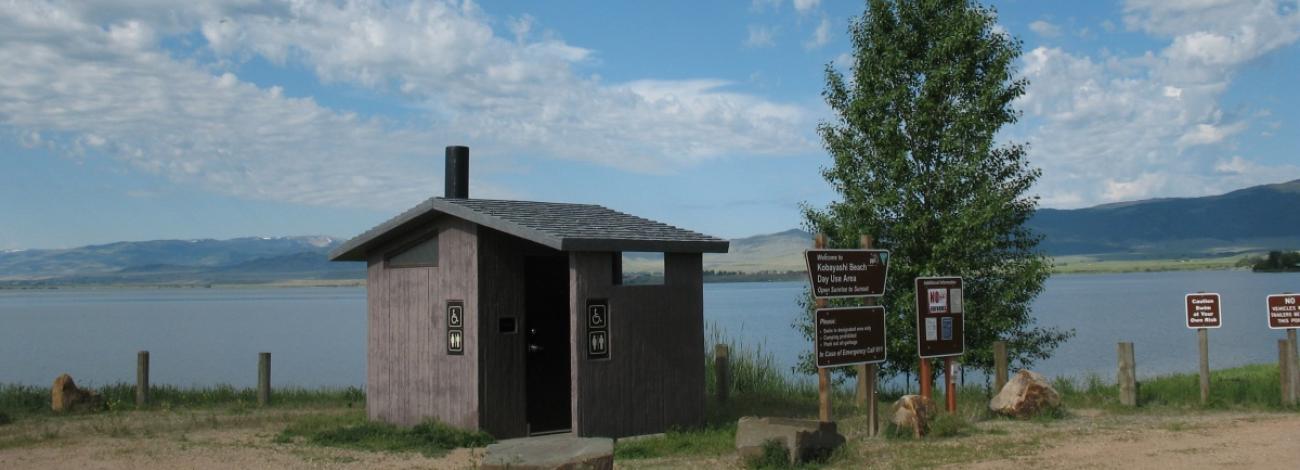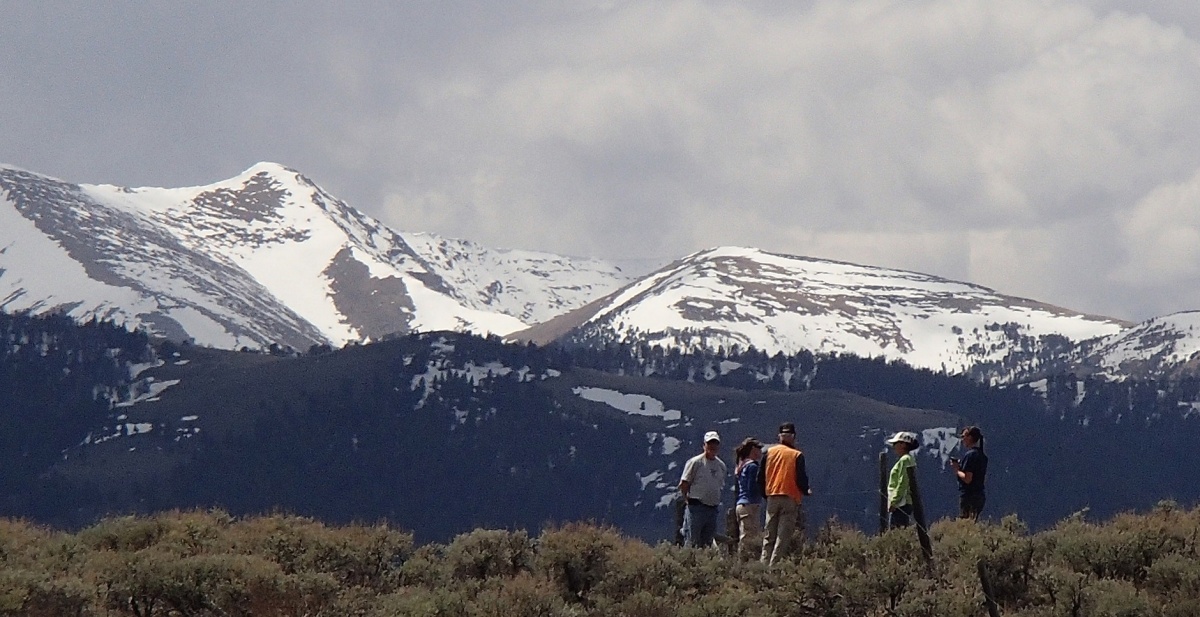
Montana Recreation Partnerships
In Montana and the Dakotas, the Bureau of Land Management fosters relationships with community partners, organizations and individuals to promote responsible use of public lands. The BLM fosters partnership relationships on the land it manages to strengthen economic, natural resource and social sustainability.
Featured Partner
As staff members of the BLM’s Dillon Field Office discussed how to improve public access to more than 41,000 acres in the Medicine Lodge Valley south of Dillon, Montana, they came up with an idea that was a reverse of the famous saying from the movie Field of Dreams: If we don’t build it, they will come.
In this case, “it” was not a baseball diamond in a cornfield, but a road which would have run adjacent to the Big Sheep Creek backcountry by-way, leaving visible scars on the landscape. For years, hunters, hikers and horseback riders had accessed prime recreation spots in the Tendoy and Beaverhead mountains via the Denhan Ranch, owned by the Hansen family who had participated in Montana’s Block Management Program which grants hunters access to private property adjoining public lands. Unfortunately, not all hunters played by the rules and after years of enduring litter, cut fences, gates left open, and reckless drivers, the family decided to drop out of the Block Management Program.
“We have a very good working relationship with the Hansen family as they are livestock permittees on several allotments in the Medicine Lodge Watershed,” said Pat Fosse, assistant field manager in the Dillon Field Office. “They are proactive and progressive land stewards.” They would also prove to be key players in an innovative land acquisition deal which also involved Montana’s Fish, Wildlife and Parks, and members of local sportsmen’s groups. In evaluating the Medicine Lodge Watershed and in light of the Hansens’ decision to drop out of the Block Management Program, Fosse and Dillon Field Manager Cornie Hudson knew they needed to respond to the public’s need for improved access, and so the Dillon Interdisciplinary Team conducted a thorough evaluation of existing resources and possible alternatives to make that happen.
“Initially our solution was to construct roads across adjacent BLM-administered land to retain access to these areas for the public,” Fosse said. “One of the roads, Cow Creek, entailed a relatively easy re-reroute, adding a couple of gates in a fence and installing four culverts to retain access. The other two areas were a little more difficult. The topography was steep and would have involved some large, very visible road cuts along the Big Sheep Creek backcountry by-way as well as constructing the road through pygmy rabbit habitat.” As the ID Team was laying out the new road construction and realizing the environmental impacts that would result from this road, wildlife biologist Katie Benzel spoke up: “Couldn’t we just use the money we would spend on these roads to pay the Hansens for an easement across their existing road?” Fosse recalled that the BLM had worked with Montana FWP on a similar project in the Lost Willow Creek drainage in the Pioneer Mountains several years ago, so she contacted FWP biologist Craig Fager and asked him if the state agency would be interested in helping with this new Medicine Lodge project. At the same time, she made a similar call to the Rocky Mountain Elk Foundation.

Both groups expressed immediate interest and Fager said he would also contact a couple of local sportsmen’s groups to see if they were interested in lending a hand. “I was impressed with the BLM who, rather than building a road, decided to contact the FWP, RMEF and others to discuss the possibility that maybe the landowner would agree to a better solution,” said Mike Mueller, senior lands program manager for RMEF. “It would have been one option to build a new road, but the fact that the BLM staff and their partners decided to sit down at the table with the landowner to discuss the options, that led to a better solution and less impacts to the land.”
Knowing private property rights could often be a touchy subject, Fosse approached the Hansen family with the idea of purchasing an easement along existing roads. “I called Eric Hansen and was very honest and upfront,” Fosse said. “I told him we did not want to see another big, obtrusive road leading to a place where an existing road already led, but if left with no other alternative that is what we would need to do. I told him we, along with our partners, would rather pay them for an easement than build the road.” Hansen said he needed to talk it over with the rest of the family, but he called back to the Dillon Field Office just a few days later.
“He said the family did not want to see a new road either because they live out there, it is their home and they love that land,” Fosse recalled. “He said they would be willing to work with us.” That really got the ball rolling on a deal in which the Hansens agreed to sell a 30-foot-wide permanent road easement crossing .66 miles in three separate road segments at a cost of $33,000, almost half of which was paid for by RMEF. Other funding was provided by FWP, Beaverhead Outdoors Association, and the Skyline Sportsmen’s Association. The hard work was only just beginning at that point, however. The field office and its partners worked for a total of 18 months to develop and implement a workable strategy to unlock the land. The goal was to have the easement available for public use by 2014 hunting season, said Angela Brown, Realty Specialist with the Dillon Field Office.
“In order for this to happen, FWP would have to acquire the easement because BLM’s acquisition process is more complex and requires more steps and time to complete. So BLM had FWP acquire the easement first and we’re now currently working on transferring the easement from FWP to BLM via an Assignment where FWP donates the easement to BLM.” BLM worked closely with FWP to prepare all the necessary title work for them to close with the Hansens on October 17, 2014—just nine days before the opening of rifle season. “This project could not have been completed without FWP’s involvement, processes, advice, networking, and financial backing, or the financial support of RMEF and local sportsmen’s groups,” Fosse said. “Craig Fager was the point person for FWP and deserves a lot of credit for the success of this project. He wrote the Environmental Assessment and completed the required NEPA.” Mueller said acquisitions like these are valuable victories. “Today, our public lands are becoming landlocked for various reasons so these types of successes are very important.” In the end, Fosse said she was pleased at how the Dillon Field office team came together in a creative and innovative way, all so that the public can enjoy the public land they love into perpetuity.
“This was a fun, interesting, challenging and worthwhile project that evolved from the Medicine Lodge ID team just looking for opportunities to retain access for the public,” Fosse said. “We all had a ‘can do’ attitude all the way through this project.”
